One of the best ways to refine your sense of which pots are a good match for a given tree is to try out different alternatives. This is especially true for trees with unusual shapes or features.
In the case of the ume below, I can use a deep round (or square, or hexagonal) pot to match the semi-cascade form of the tree. As a deciduous tree, a glazed container is a natural fit, but as a tree with prominent deadwood, an unglazed container might also be a good match.
Before looking at the options below, do any specific pot shapes, styles, or colors come to mind?
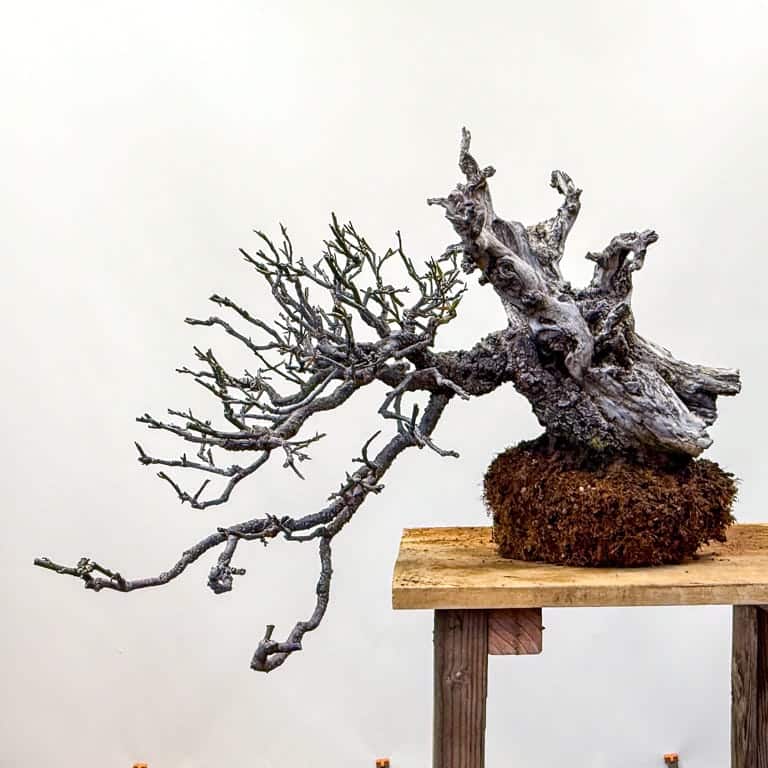
Semi-cascade ume
Here are the containers I had to choose from. As I’m not planning to show the tree anytime soon, it doesn’t need to go into a perfectly sized pot. My current development goal is to make the silhouette slightly larger and increase the overall twigginess.
As you evaluate the options below, try to focus on pot color, shape, and style rather than size. In other words, if you could make any of the pots below the perfect size, which would you want to use for a winter exhibit? (The flowers are double pink, if that helps.)
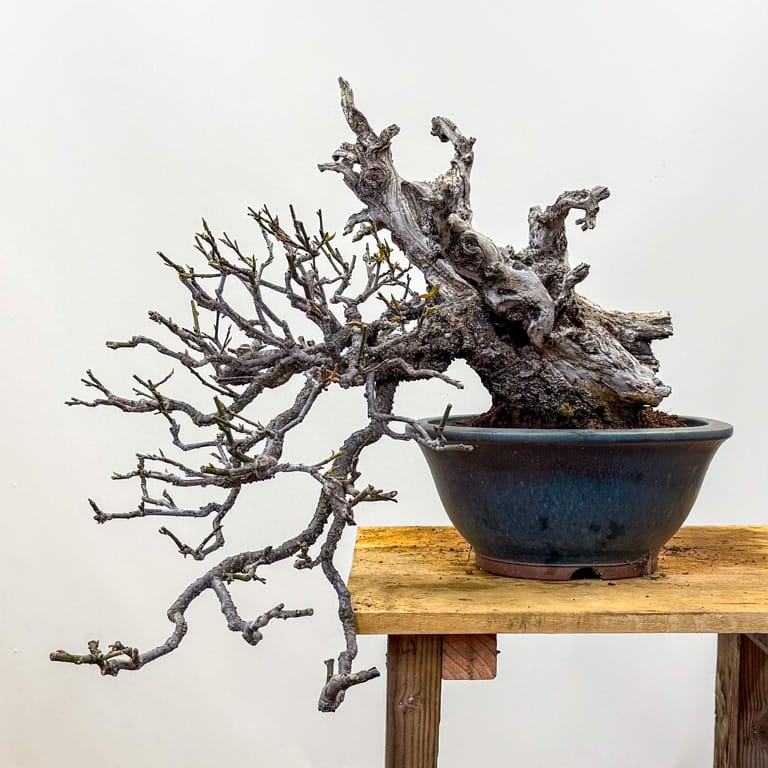
Option 1 – Michael Hagedorn
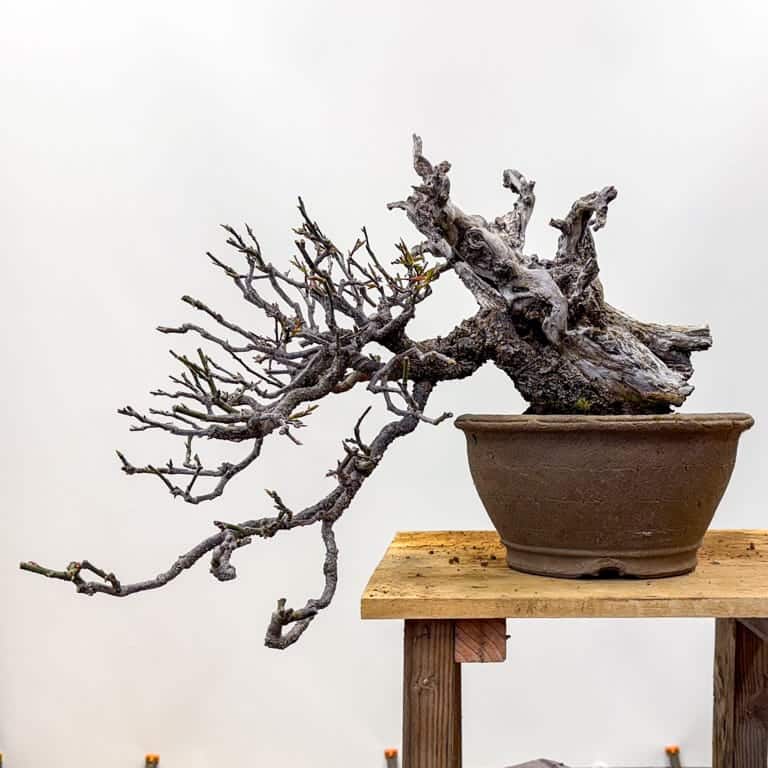
Option 2 – 2nd generation Yamaaki
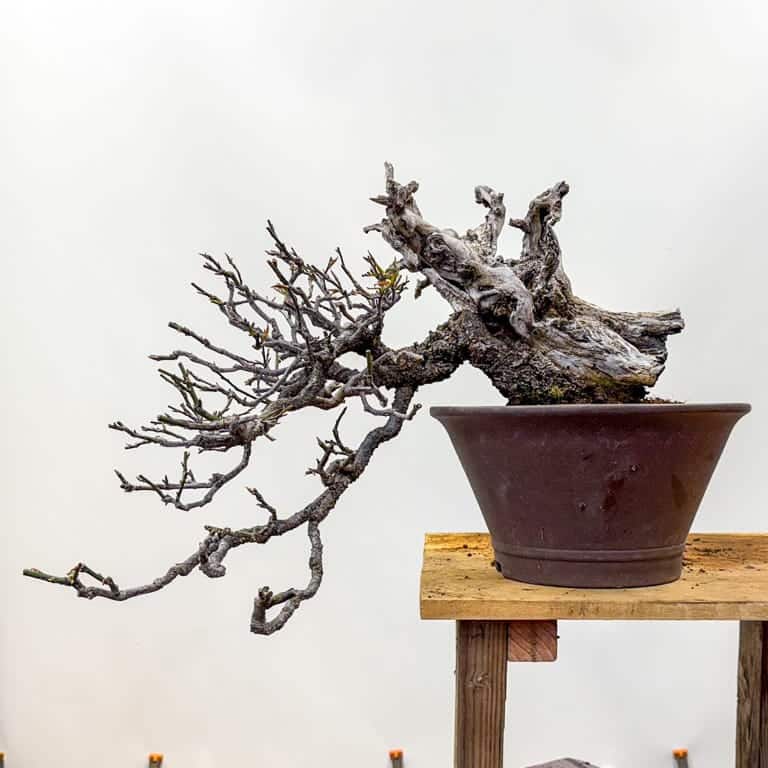
Option 3 – new Chinese
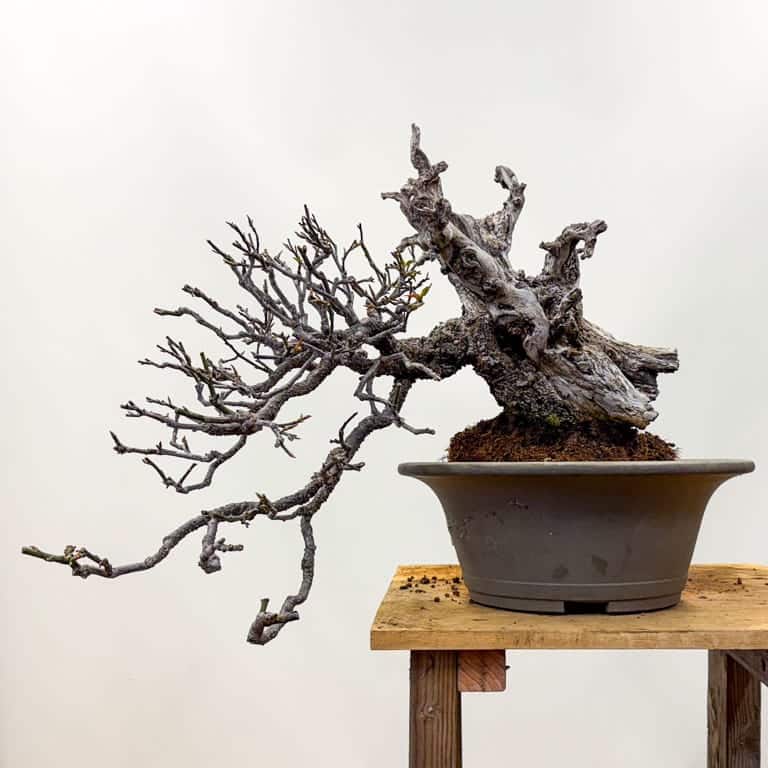
Option 4 – Tokoname
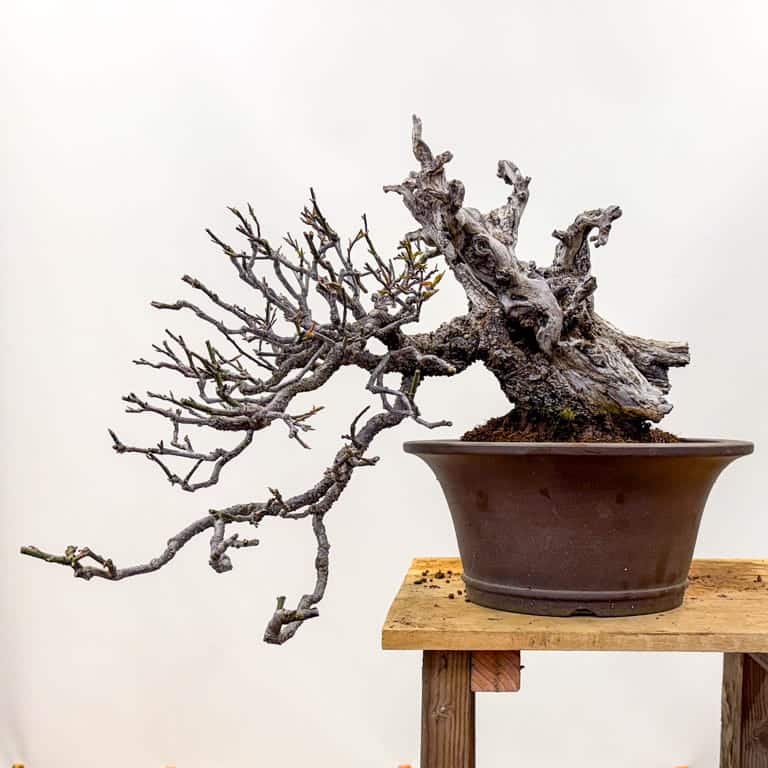
Option 5 – Ikko
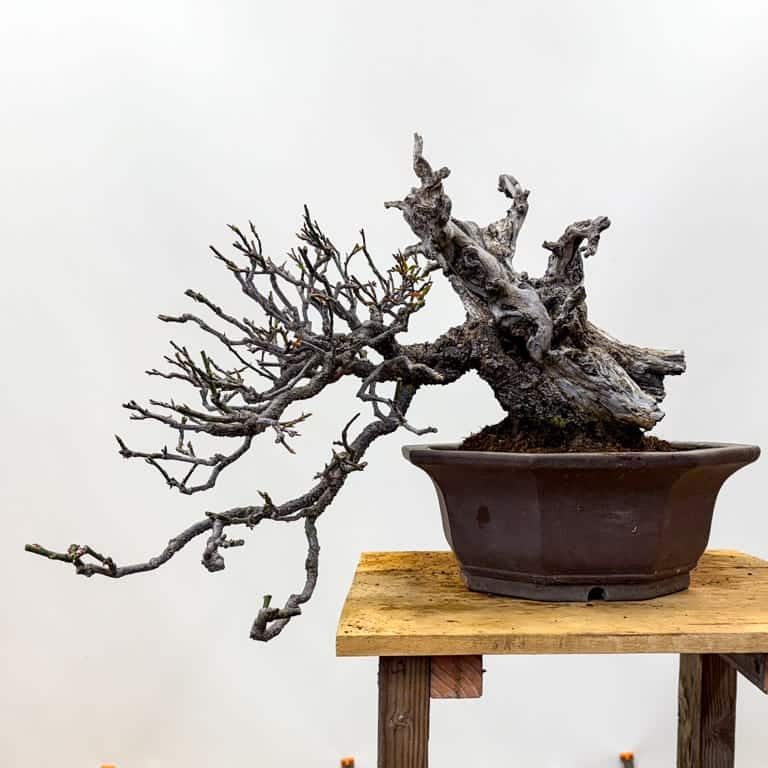
Option 6 – Eight-sided Tokoname
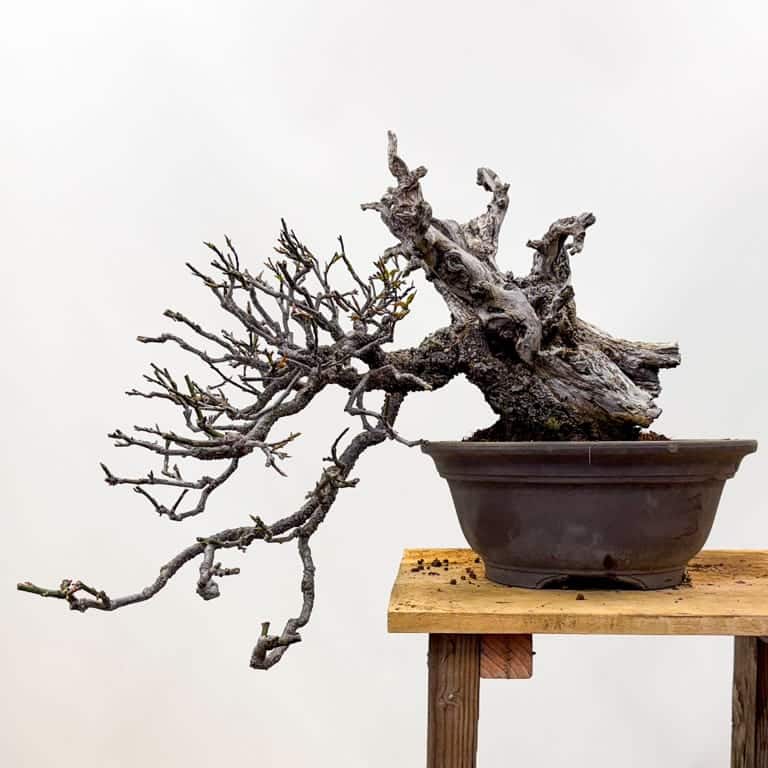
Option 7 – training pot
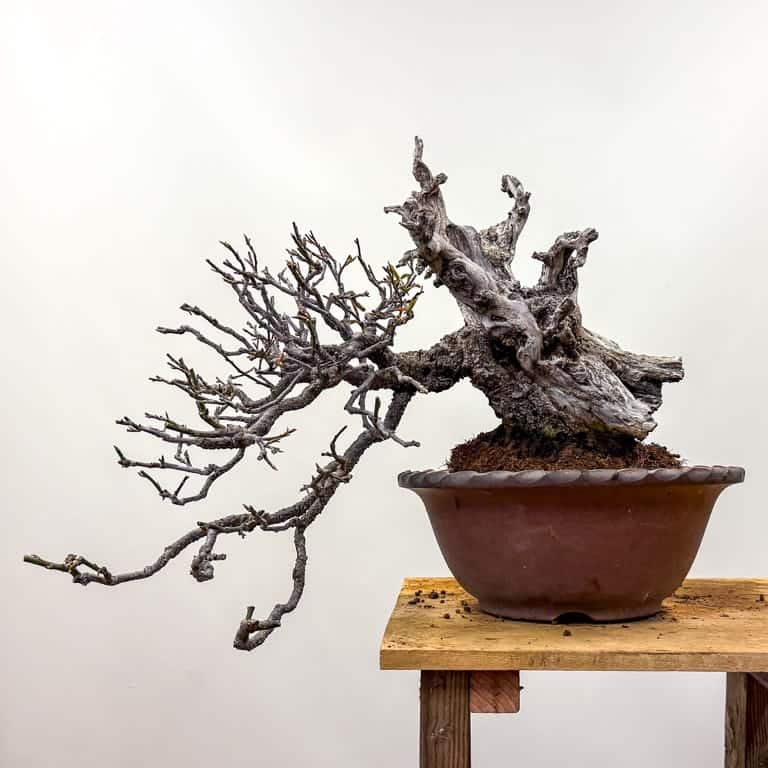
Option 8 – Antique Japanese
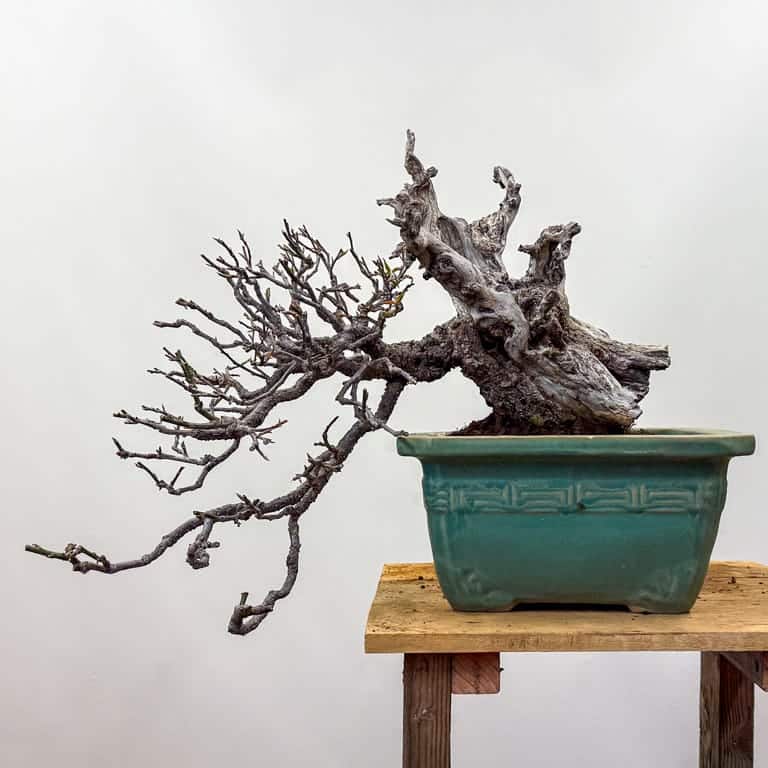
Option 9 – Imported square

Option 10 – Jan Rentenaar
Although I prefer some options better than others, I don’t know that I find any of the options to be a perfect match for the tree.
- Option 1 (Hagedorn) is a beautiful container but is more refined than I’d like to accompany the craggy bark and deadwood.
- Option 2 (Yamaaki) is good fit but a darker shade of brown or a clay with more color might provide more interest.
- Option 3 (new Chinese) almost looks tippy and makes the trunk look small.
- Option 4 (Tokoname) is better than 3 but the wide lip makes the trunk look small.
- Option 5 (Ikko) is closer but like 3 and 4 the flare at the lip makes the trunk look small.
- Option 6 (Tokoname) makes me think the eight-sided design could be a good fit for the tree, but it the thick lip creates a heavy feeling for the twiggy tree.
- Option 7 (training pot) is a surprisingly good fit for the tree, but it lacks the quality and craftsmanship I’d like to see in a show pot.
- Option 8 (antique Japanese) is in interesting option that looked better than I expected but it feels heavy for the tree (I think it’d be great with a conifer of similar shape and style).
- Option 9 (imported) feels heavy for the tree and I don’t know that the color goes well with the pink flowers.
- Option 10 (Rentenaar) is a good fit for the tree if the goal is to present it in a contemporary design. If it were a bit smaller I’d consider using it in an exhibit.
I ended up using the eight-sided pot as I want to give the roots some extra space to help the tree gain strength while I focus on improving the silhouette. Although it’s heavier than I’d like, it’s not as deep as some of the other containers and it’s the right size overall.
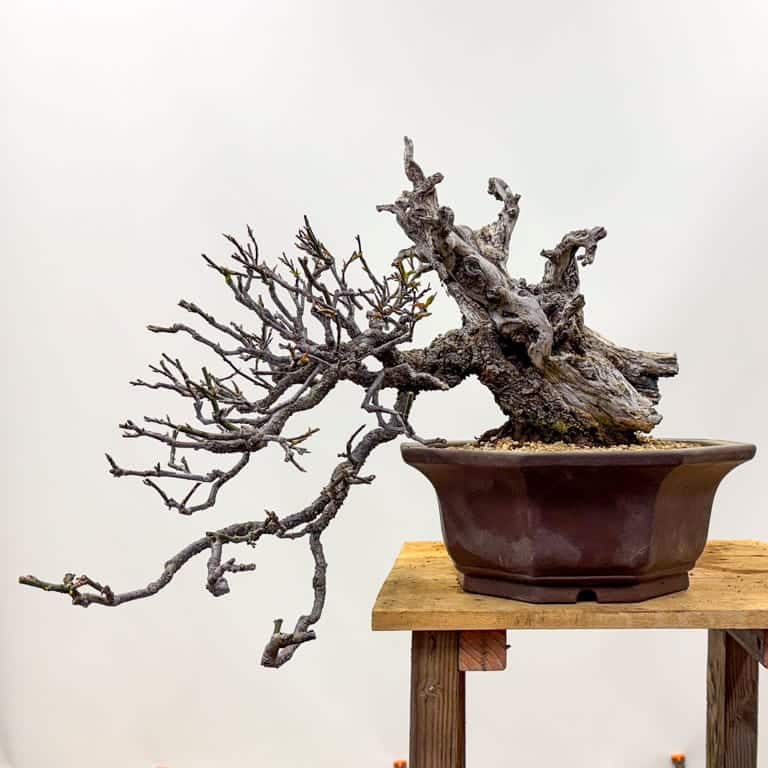
Ume in an eight-sided container.
If and when I decide to show the tree next, I’ll plan to run through the same exercise with whatever pots I have on hand at the time. Until then, I’m looking forward to getting the tree back into shape!
